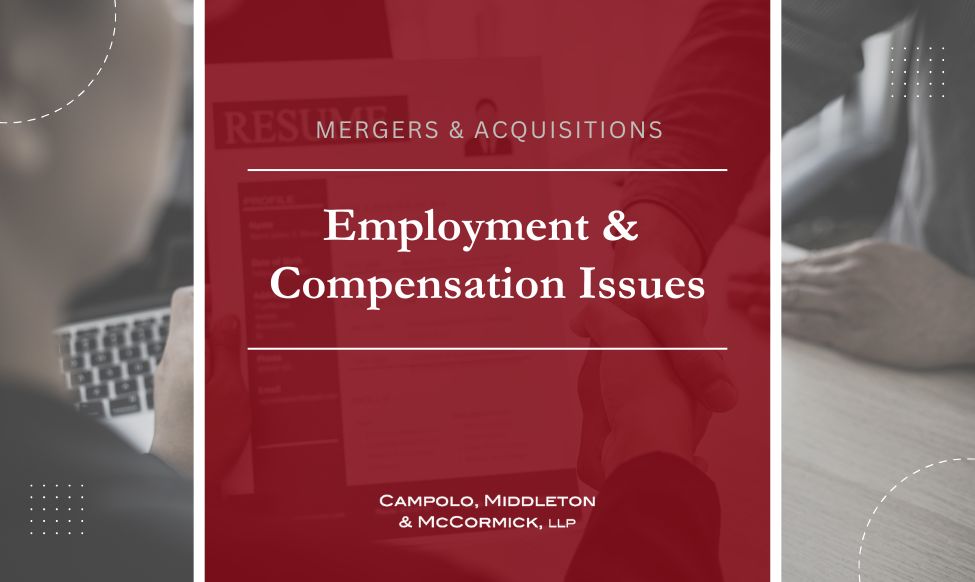Employees are often one of the most valuable and sensitive aspects of any mergers and acquisitions (M&A) transaction. While companies may focus on financial and operational synergies, overlooking the employment and compensation landscape can lead to legal complications, cultural disruption, and retention issues. People-related risks must be carefully assessed and addressed to ensure a smooth transition, preserve morale, and avoid costly liabilities.
One of the most immediate challenges is the potential for change-of-control payments. Executive employment agreements, particularly for senior leadership, often include provisions for bonuses, severance packages, or other compensation triggered by a sale or merger. These payments, sometimes referred to as “golden parachutes,” can be substantial and may require special approvals under tax laws or corporate governance rules. In public companies, they may also require shareholder disclosure or votes under securities regulations.
Beyond executives, many companies implement retention plans or offer equity-based compensation such as stock options or restricted stock units (RSUs). In an M&A context, these awards may accelerate automatically upon closing, meaning employees receive immediate vesting of their unvested equity. This can significantly increase transaction costs and lead to unintended consequences—such as employees leaving post-closing after cashing out. Buyers may need to negotiate modifications, implement new retention programs, or factor these expenses into the purchase price.
For businesses with unionized or heavily regulated workforces, labor law requirements introduce an additional layer of complexity. Collective bargaining agreements (CBAs) may require formal notice to, and in some cases consultation with, labor unions prior to a transaction. In certain jurisdictions, failure to follow these procedures can result in legal action, regulatory penalties, or strike activity. Even in non-union environments, laws such as the WARN Act in the U.S. may impose notification requirements for mass layoffs or plant closures related to the deal.
Another critical concern is benefit plan continuity. Health insurance, retirement plans, and other employee benefits may not automatically carry over in a transaction—particularly in asset sales, where the legal entity does not remain intact. Buyers must determine whether to assume, replicate, or terminate existing plans, and must ensure compliance with applicable laws such as ERISA (in the U.S.), tax codes, and non-discrimination rules. In cross-border deals, local benefit laws and employment protections may vary significantly, requiring jurisdiction-specific planning.
Ultimately, managing employment and compensation issues in an M&A transaction requires a strategic and legally sound approach. HR teams, legal counsel, and advisors must work closely together to conduct diligence, evaluate employment liabilities, communicate with employees, and structure retention and incentive programs aligned with the post-closing business goals. By anticipating and addressing these issues early, parties can protect the workforce, preserve deal value, and pave the way for a successful integration.
M&A Deals: Here’s What You Need to Know
Consents and Approvals: The First Gate to Closing an M&A Transaction
How Commercial Contracts Can Make or Break Your M&A Deal
What Really Keeps M&A Deals on Track? A Closer Look at Governance and Fiduciary Duties
The Overlooked Obstacle in M&A: Existing Debt and Its Hidden Risks
For guidance, contact Vincent Costa at vcosta@cmmllp.com or 631-738-9100.

